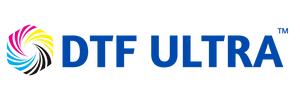FAQs
What is DTF printing?
DTF (Direct to Film) printing is a modern technology that allows you to easily print on a wide range of fabrics and textiles. Widely recognized as the new industry standard for printing on apparel, DTF printing is incredibly versatile, has an exceptionally low cost per print, and produces vibrant, stunning results.
What types of garments are compatible with DTF printing?
DTF printers can print on many light or dark fabrics and textiles, including cotton, polyester, cotton-polyester blends, spandex, nylon, denim, and canvas. Common applications include t-shirts, hoodies, jeans, bags, and caps, but the possibilities are endless!
What is the difference between a DTF and DTG printer?
A DTG (Direct to Garment) printer prints designs directly onto flat garments. As you can imagine, this method comes with inherent limitations, as many objects cannot fit into a DTG printer. With DTF printers, you print the design onto a PET film (also called DTF Film). Then you cover the design with the hot melt adhesive powder and shake well. Using a DTF Oven to cure the ink, you will bond it to the DTF Film. Then you will heat press the PET Film onto the garment and finally tear off the PET Film and finish transferring, leaving a bold and captivating design.
Should I choose a DTF or DTG printer?
In general, we recommend DTF printers because they’re versatile, economical, and widely viewed as the future of garment printing. That said, a Direct to Garment printer may be a better fit depending on your unique needs and preferences.
DTG printers typically produce finer details and more accurate colors, and the prints tend to be more durable and breathable. That said, a DTF printer will absolutely deliver professional results—the difference isn’t usually worth the loss of versatility and financial savings.
If you’re still unsure which type of digital printer is right for you, get in touch for personalized guidance.
Which DTF printer should I choose?
We offer a variety of DTF printers for sale so you can find the one that ticks all the boxes. For beginners, popular models include the A4 L805, A3 R1390, and A3+ L805. All three are user-friendly and competitively priced and will still produce phenomenal results. For advanced users, best sellers include the A3 L1800, A3+ XP600, and A3 XP600 Dual Head.
Please note that DTF digital printers will also require various DTF printer parts and digital printing supplies. We carry comprehensive bundles that include everything you’ll need. Here are the basic components for a complete DTF printing setup:
- Software for editing and printing designs
- DTF ink
- PET films
- Hot-melt adhesive powder
- Automatic powder shaker machine or curing oven
- Heat-press machine
What is UV DTF Printing, and what are its main advantages?
UV DTF printing is a process that creates high-quality, durable stickers that can be applied to a wide variety of surfaces. Unlike traditional UV printing, which prints directly onto an object, UV DTF involves printing a design onto a film, laminating it, and then transferring it as a sticker to the desired item. This method eliminates height and shape limitations, making it ideal for objects with irregular, curved, or tall surfaces. It’s compatible with materials like glass, wood, metal, acrylic, and leather, allowing for extensive customization options. The main advantages of UV DTF printing are its versatility, ease of use, and ability to produce vibrant, long-lasting designs on challenging surfaces.
What is UV Printing, and what are its main advantages?
UV printing is an advanced technology that directly prints high-resolution designs onto materials like glass, wood, metal, acrylic, and leather. The process is straightforward: create a design using software, position the object on the printer’s tray, and print directly in one step. It delivers exceptional print quality, creating UV-resistant and wear-resistant designs, and supports customization for flat and cylindrical items like phone cases, plaques, and bottles. With no need for laminating or transferring, UV printing is a simple, efficient solution, though it is subject to height limitations (e.g., 150mm for some printers).
